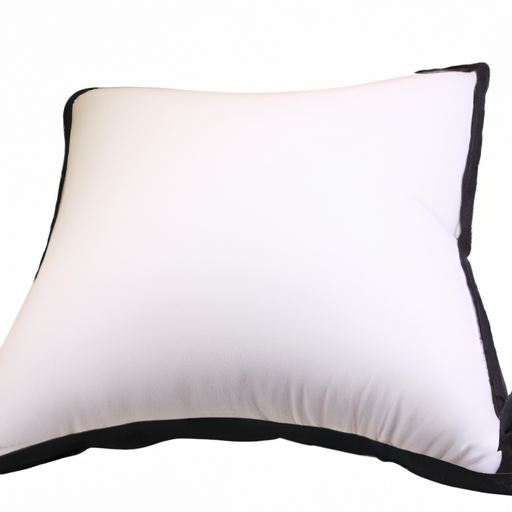Meditation can be an incredibly powerful tool for relaxation, self-reflection, emotional healing and even spiritual exploration. For those new to meditation, one of the most important questions to answer is how long one should sit on a meditation pillow. Situating oneself comfortably and ensuring a proper posture are just as important as the amount of time spent meditating.
Benefits of Sitting on a Meditation Pillow
The primary purpose of sitting on a meditation pillow is to increase comfort and to help improve posture. With the availability of various shapes and sizes of meditation pillows, you can find one that works well for your body type. For example, a cushioned meditation pillow provides extra cushioning and can help maintain good posture, while a bolster pillow (which is wider and flatter) aids in more upright posture. Meditating on a pillow may also provide deeper relaxation as it is supportive, cozy, and less stiff than a regular chair.
Meditation pillows can be beneficial for several reasons. They are designed to reduce physical strain that comes from maintaining a seated posture for long periods of time, which is especially beneficial for those with physical limitations or ailments. Sitting on a pillow also encourages proper body alignment and encourages focus on the breath. Finally, a meditation pillow provides a comfortable space to relax and be still.
Types of Meditation Pillows
There are several types of meditation pillows available to choose from, including zafu (round) pillows, bolsters, crescent-shaped pillows, and meditation benches. The type of meditation pillow you choose will depend on your unique needs, body type, and goals.
Zafu pillows are the most popular type of meditation pillow and are round with a flat base. They provide comfort and cushioning while comfortably supporting the hips and legs in cross-legged positions. Bolsters, on the other hand, are wide and flat and come with or without cushioning. These are also great for seated meditation as they provide extra cushioning to the back, legs, and feet.
Crescent cushions are a great shape for meditation because they have an angled backrest that make it easy to maintain an upright posture. These cushions also slightly support the lower back and neck, providing a comfortable spot for meditating in any number of positions. Finally, meditation benches are made of wood or metal and provide support for meditating in an upright position.
How to Position Yourself on a Meditation Pillow
Once you have chosen your ideal pillow or bench, it’s important to position yourself correctly. It is suggested to sit near the center of your pillow or bench so that your torso can be comfortably aligned in an upright stance. Your legs should be crossed or in lotus position, with your lower back slightly elevated—this helps maintain the spine’s natural curve and encourages relaxation. Comfort is key here, so don’t be afraid to adjust your position throughout your practice to find which position is most comfortable for you.
Tips for Finding the Right Meditation Pillow
When shopping for your ideal meditation pillow or bench, it’s important to look for one that will provide both comfort and support—and your personal preferences may come in to play here. If you’re looking for more support and cushioning, consider a zafu or bolster pillow. For more stability, try a crescent-shaped cushion or a meditation bench. Additionally, if you’re shopping online, be sure to read reviews to get an idea of how well-made the product is before you make your purchase.
What to Look for When Choosing a Meditation Pillow
When investing in a meditation pillow or bench, there are some key points to consider. Firstly, make sure to pay attention to size. You want a cushion that is large enough to provide proper support, but not too big that it’s uncomfortable or hard to move around in. Secondly, check for quality—a good meditation cushion should provide optimal cushioning without sacrificing support, and should also be made from a durable material. Thirdly, pay attention to shape—the shape of your meditation cushion should suit your body type, so choose one that fits your individual needs. Finally, consider the materials used for production—some pillows are filled with buckwheat hulls, which provide better insulation than foam or batting.
How to Clean and Maintain Your Meditation Pillow
Cleaning and maintaining your meditation pillow properly will ensure that it lasts longer and remains odor free. Most meditation cushions are machine-washable; however, you should check the manufacturer’s instructions before washing. If the pillow is not machine-washable, use a damp cloth to spot clean only. Additionally, make sure the pillow is completely dry before storing it away; otherwise, it can become mouldy and cause health risks.
Alternatives to Sitting on a Meditation Pillow
If sitting on a meditation cushion isn’t for you, there are other options available. For a more comfortable experience, you can use a reclined or layback chair or bench that allows you to stay in an upright position with minimal physical strain or discomfort. These chairs usually come with adjustable backrests and feet supports that allow you to position yourself comfortably and maintain proper posture.
Troubleshooting Common Issues with Sitting on a Meditation Pillow
If you’re having trouble sitting on your meditation pillow: start by evaluating your positioning—make sure your spine is straight and that your hips are positioned higher than your knees. Additionally, adjust the height of your pillow if needed—too much elevation may put unnecessary pressure on your spine and cause discomfort.
If the height isn’t the issue: try experimenting with various cross-legged positions such as butterfly and half lotus, which can help increase overall comfort and reduce leg fatigue. Finally, pay attention to breathing—focus on deep breaths will help alleviate back tension.
Sitting on a meditation pillow can take some time to get used to; however, with patience and practice it can become a comfortable habit and serve as an integral part of a daily meditation practice.



